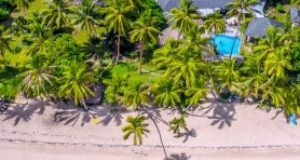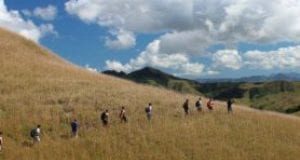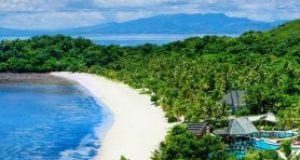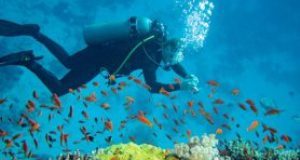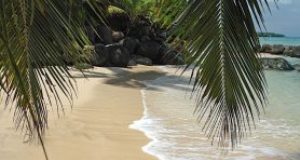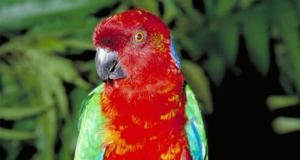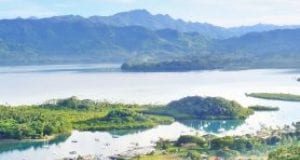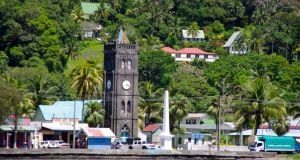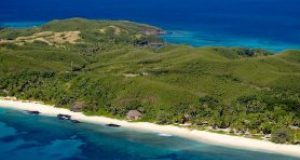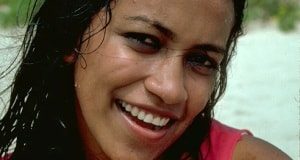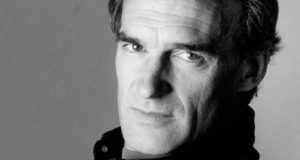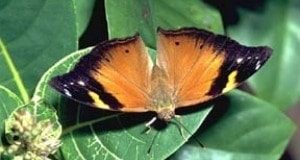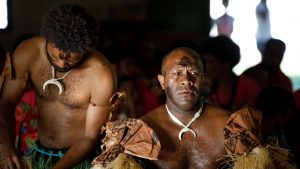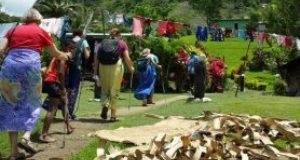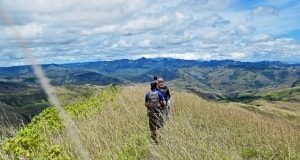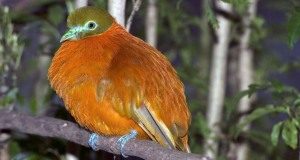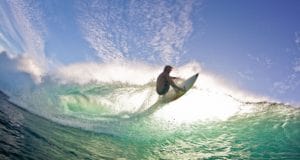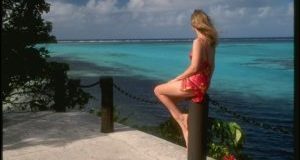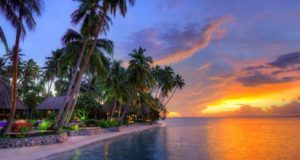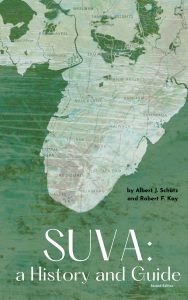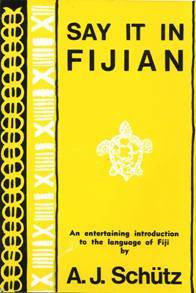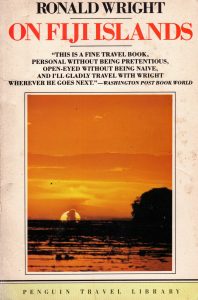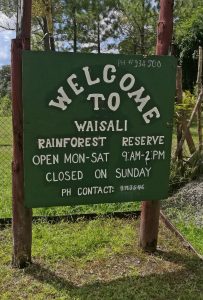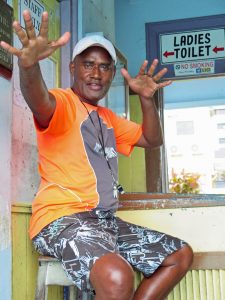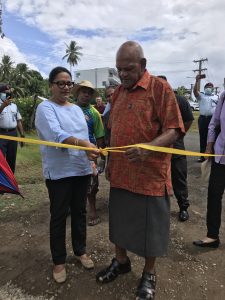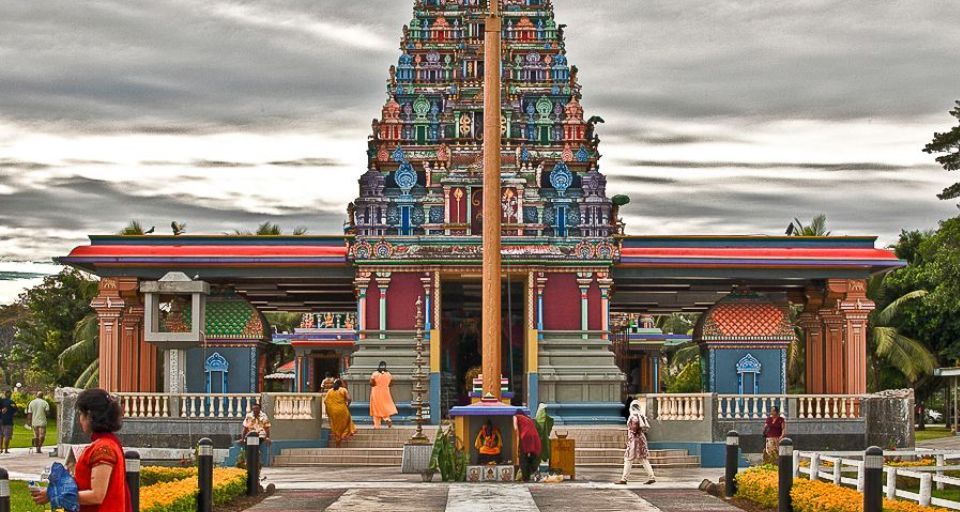Nadi, Denarau & Lautoka–the linchpin of Fiji’s Tourism Industry
If we are going to describe the Nadi, Denarau & Lautoka area we need to start with Nadi Town, as it’s called locally.
Once a small community of farmers and shopkeepers, Nadi has mushroomed into a mini megalopolis of approximately 42,284 inhabitants – Fiji’s third-largest city. The growth of Nadi as Fiji’s tourism capital has resulted in a real estate boom, new roads, new shopping centers and unfortunately a lot more traffic.
Nadi Town, as it’s often called by locals, is both a frenetic hub of sugar growing and tourism surrounded by rolling, bucolic countryside. If the truth be told…the sugarcane is rapidly giving way to hotels and highways.
The area surrounding Nadi – a patchwork of sugar cane fields – has the highest concentration of hotels and resorts in the entire country. This is where most visitors spend a lot of their time because of its proximity to the airport (nine km from the town) and the fine weather.
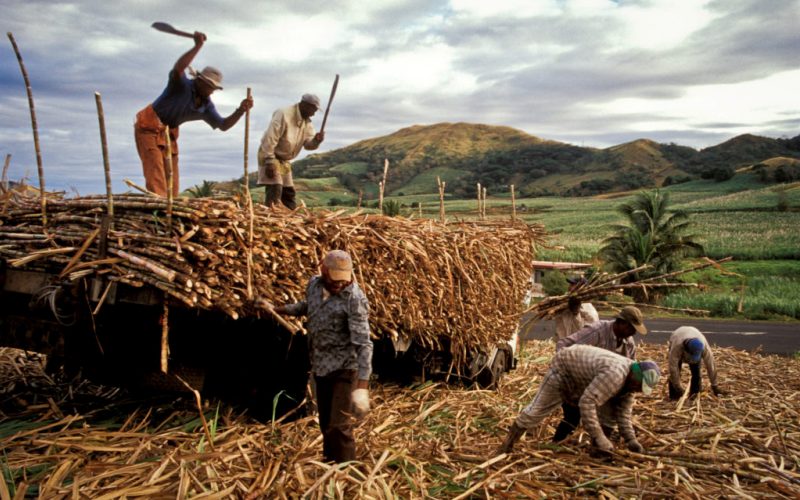
Nadi (along with Suva) is perhaps the best place in Fiji to pick up souvenirs. There are some excellent eateries and, new coffee houses are popular with visitors and locals.
The beaches are relatively unpopulated, and the mountainous region (known as the Nausori Highlands) to the east is nothing short of spectacular. Visiting the Nausori Highlands is well worth it but roads can be rough and/or muddy and car rental agencies wouldn’t be happy if they knew you had plans to explore remote areas.
Multi Cultural Society….
With a large Indo-Fijian population, Nadi is a religious center for Muslims and Hindus. The major place of worship for Hindus is the multi- chromatic Sri Siva Subramaniya Temple on the east side of town. The Hindu shrine is reportedly the largest in the Southern Hemisphere. Visitors are welcomed but cameras are tabu on the temple grounds. Be sure to take off your shoes before entering.
Location
Don’t Miss the Nadi Town Public Market
The Nadi Public Market is where locals purchase fruits, vegetables, fish and other necessities. For visitors there’s a plethora of handicrafts. In town you can also visit the Sri Siva Subramaniya Temple. Take a taxi from the bus station and visit the Garden of the Sleeping Giant (a 20 minute taxi ride from Nadi) located between Nadi and Lautoka. (Pack a picnic lunch and see the 30 to 40 varieties of Asian orchids and Cattleya hybrids). 30 minutes down the same road (that gets you to the Garden of the Sleeping Giant) will take you the mud baths and hot springs of Sabeto and nearby Tifajek. (Note that this isn’t the only public market in the Nadi, Denarau & Lautoka corridor. Lautoka has a great one as well).
About Denarau Island
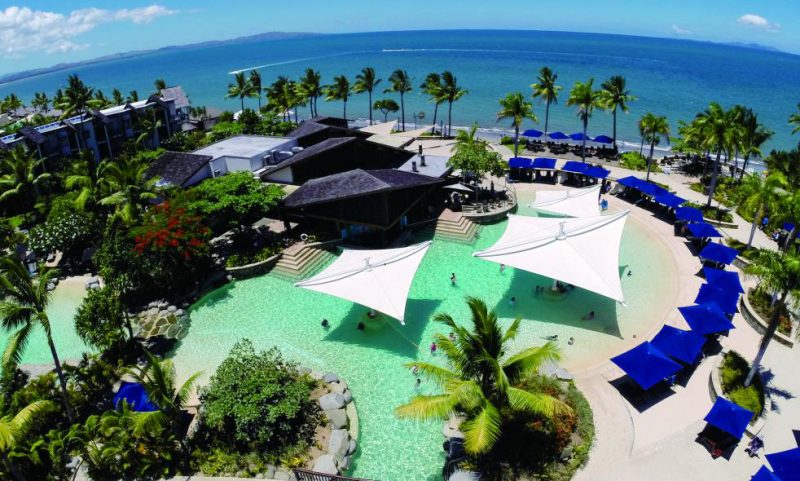
If you’re planning a trip to Fiji you’ve heard of Denarau Island, Denarau and perhaps Port Denarau.
So what exactly is Denarau Island?
Let’s start by calling it a 2.55 sq km self-contained, high-end tourist destination that’s grown to be the most popular attraction in Fiji.
It’s located about 6 km from Nadi, but physically, it’s not an island. It’s more of a peninsula surrounded by mangrove swamps. In fact, it was a mangrove swamp before it ever was a real estate development. In this respect it was the most remote and off the beaten track of the Nadi, Denarau & Lautoka communities–before tourism development reared its head.
However, from a metaphorical perspective, it’s very much a tranquil island of foreign visitors compared to the din and peripatetic bustle of Nadi Town.
So what does Denarau Island consist of?
The hub of the complex are eight very classy hotels and an apartment complex — Sheraton Fiji Resort, The Westin Denarau Island Resort & Spa, Sheraton Denarau Villas, Radisson Blu Resort Fiji Denarau Island, Sofitel Fiji Resort and Spa, Hilton Fiji Beach Resort & Spa, Wyndham Resort Denarau Island , The Terraces, and The Palms Denarau – Executive Apartments.There are also privately owned high end residences; an 18-hole championship golf course; numerous restaurants; a marina (aka Port Denarau with fishing boats and ferries to the nearby Mamanuca Islands); The Big Bula Waterpark (which has slides and swimming pools); and a plethora of shopping outlets selling everything from pearls to polo shirts.
Suffice it to say, this is a busy place, chock with visitors. Call it Fiji’s answer to Waikiki.
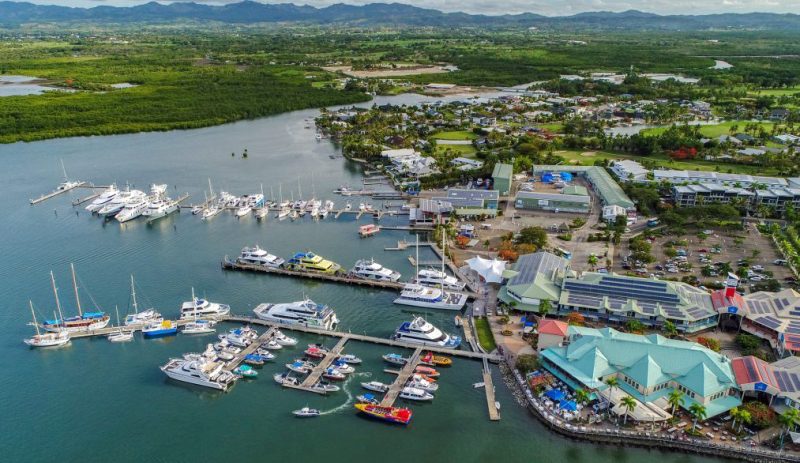
You could think of it as Fiji’s version of Waikiki, sans high rises and massage parlors. Like Waikiki, it does have a beach. Unlike Waikiki it has a guard post at the entrance, so in that respect it resembles a gated community. In fairness, any hotel or respectable apartment complex has security, and so it is with Denarau.
If you’re heading to the Mamanuca Group, by necessity you’re going to have to visit Port Denarau (a lovely marina that’s integrated into the rest of the complex) from where you’ll catch a swift boat to your off shore resort.
The Port also has a wide array of excellent restaurants and cafes which cater to the guests at the eight nearby hotels. The restaurants at Port Denarau tend to be a bit more expensive than in town, but the ones I’ve eaten at are quite good.
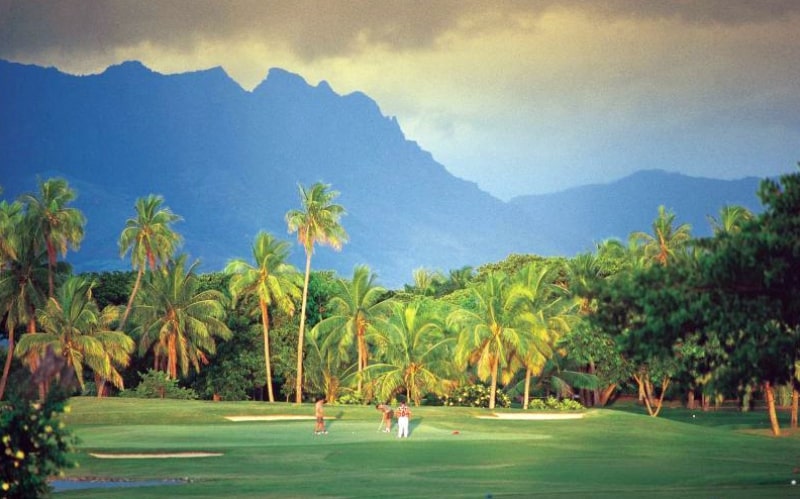
Final thoughts…
In short, if you’re a visitor, Denarau has it all. If you’re interested in exploring the indigenous culture and meeting local people, you’ll need to jump in a car or a taxi. Denarau works well as a staging area for attractions around the “Burning West”, as the Nadi, Denarau & Lautoka area is affectionately called.
About Lautoka
Lautoka, Fiji’s second largest port, is located about 20 minutes north of Nadi via taxi. It’s more “industrial” in flavor than Nadi, with fewer tourist attractions. Of all the communities in this Nadi, Denarau & Lautoka corridor, Lautoka is both the largest and the most “local” in flavor. Whereas Nadi has evolved (or perhaps devolved) into a booming tourist destination, Lautoka couldn’t be more different.
With a population of around 52,220, it is Fiji’s second-largest city and an important business center. From here most of the vessels sail not only for foreign ports but to the outer islands and the resort areas. Lautoka is also a quintessential sugar town, with reputedly one of the largest sugar mills in the southern hemisphere. Although tourism is important to the region, sugar is still king here and the sugar industry is the largest single employer in the district.

Tradition has it that within the bounds of today’s Lautoka city limits there lived two tribes. One day a fight broke out between the tribes’ chiefs at a spot known today as Farquahr’s Point. As one chief speared the other he screamed Lau-toka, which means ‘spear hit’ or ‘hit to win’. Thus Lautoka acquired a name.
Captain Bligh of HMS Bounty
The first sighting of the area was on the dawn of 7 May 1789 when Captain Bligh of HMS Bounty sailed by in his launch with loyal crew members – those who had been tossed out as a result of the famous mutiny. Bligh made rough charts of the shores of Lautoka and sketched the mountains in the background.

During the 19th Century, several agricultural co-ops, including cotton and rubber, were attempted in Fiji but none, except sugarcane survived. The Colonial Sugar Refining Company (CSR) and the Australian Sugar Company took interest in Fiji during that period. At one point there were some 36 sugar mills operating in Fiji. CSR built its first mill at Nausori in 1882 followed by a second in Rarawai in 1886 and a third in Labasa in 1894.
The last mill constructed by CSR in Fiji was in Lautoka. It was erected between 1902 and 1903. Commensurately, 10 thousand acres were planted for the Lautoka mill during that year. It proved to be a success and is still in service today.
Lautoka–City of Sugar
Lautoka was proclaimed a city on 25 February 1977 and today is the headquarters for important government and statutory bodies such as the Fiji Electrical Authority, the Fiji Pine Commission and the National Marketing Authority. It is the administrative capital of the Western Division, which contains more than 50% of the nation’s population. Aside from sugar, it’s also a center for manufacturing in Fiji.
There never were a great deal of tourism-related activities in Lautoka and it’s diminished even more with the creation of Port Denarau. The large municipal market is probably the biggest draw. If you’re interested in a in a glass of beer and an inexpensive meal, the Northern Club is one of your best bets in the Nadi, Denarau & Lautoka corridor.
Related Posts
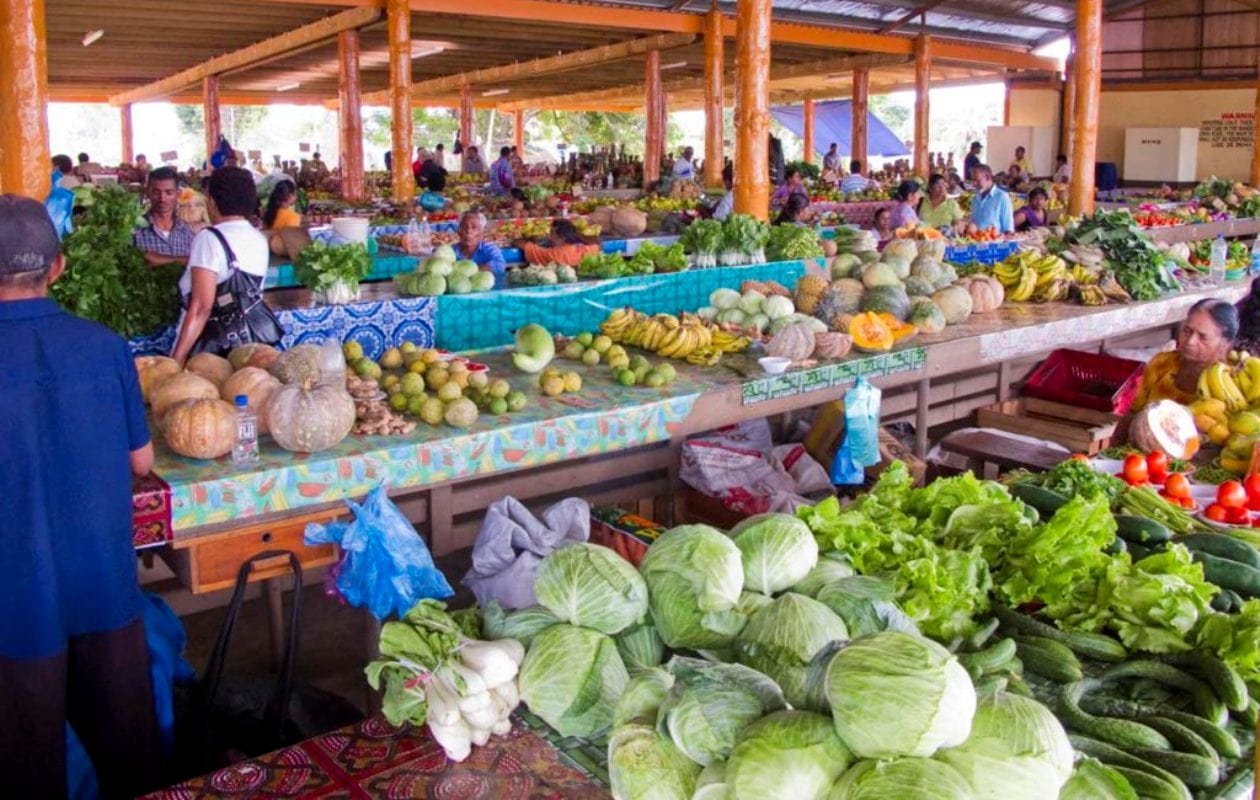
Produce Market of Nadi
Let’s walk around this wonderful market and let’s see what we can buy for lunch and dinner!! Very graphic and very cultural scenes from this very popular place here in Fiji. Take a stroll and mingle with the locals at the Nadi produce market. You can buy fresh and cheap fruits like paw paws, pineapples […]




